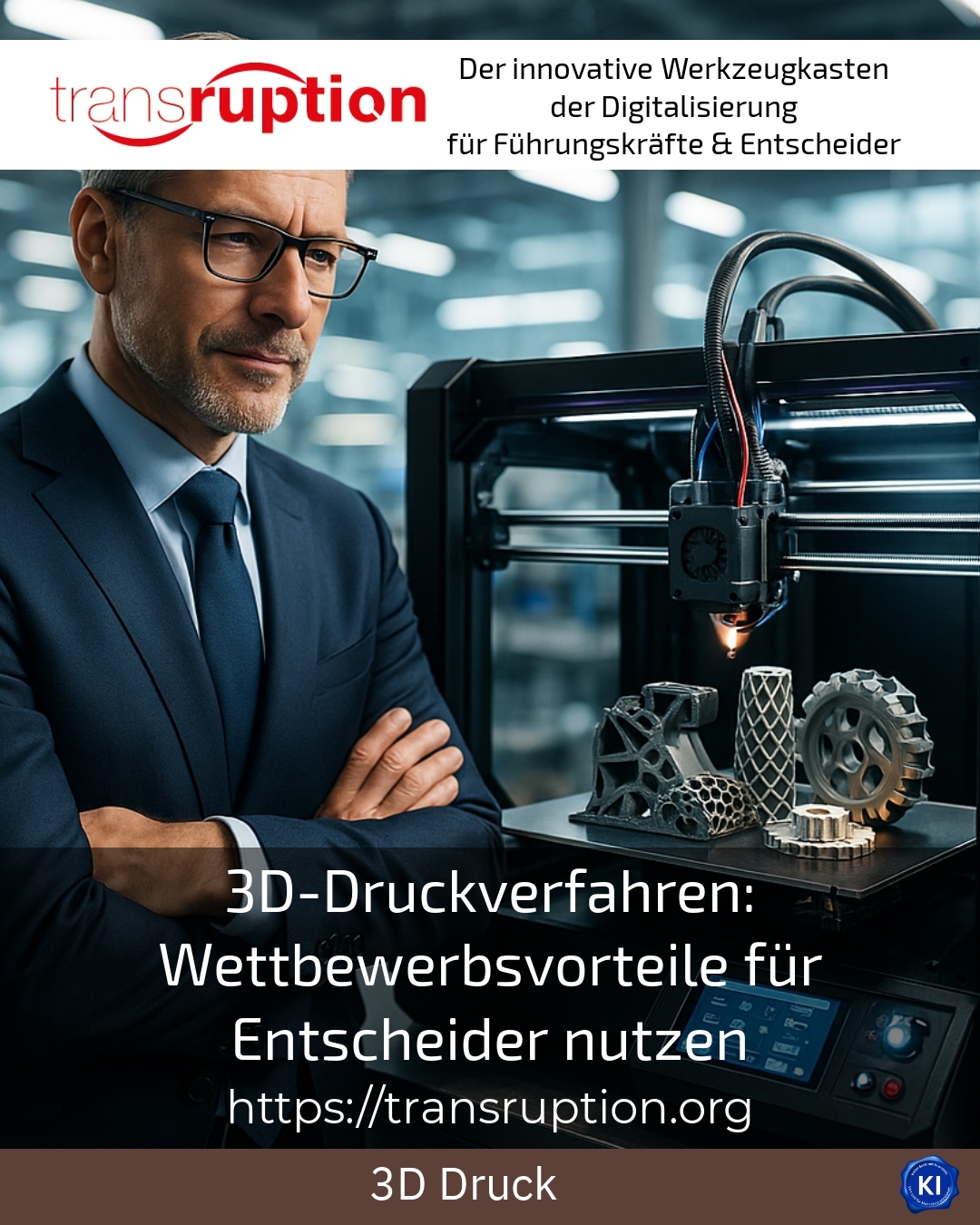Today, innovation drivers such as the 3D printing process offer significant competitive advantages across all industries. Decision-makers are faced with the challenge of how to capitalise on the potential of additive manufacturing for their business model. 3D printing processes make it possible to produce faster, more flexibly and more customised than ever before. This allows completely new markets to be opened up and existing business areas to be sustainably strengthened.
Flexibility and individualisation as a market opportunity
The possibilities for realising individual solutions were limited for a long time with conventional production methods. The 3D printing process removes these limits. Companies benefit from the option to manufacture products and components exactly according to customer requirements - even in small quantities or as one-offs. This opens up new business models and strengthens customer loyalty in the long term, particularly in the field of prostheses, but also in the consumer goods industry[1].
Customised adaptations are not only possible with 3D printing processes, they are becoming standard. From personalised pieces of jewellery to precisely fitting machine components: The technology makes it possible to respond directly to special requests. This flexibility is a clear competitive advantage in dynamic markets.
Another example can be found in the transport and logistics sector. Here, spare parts are produced directly at the point of use in order to save storage costs and shorten delivery times. 3D printing processes are also proving to be a springboard for new services in the craft sector, for example in the production of limited-edition collector's items or seasonal products[7].
Rapid prototyping and shorter time-to-market
Prototypes and sample parts can be produced in record time using 3D printing processes. This speeds up product development considerably and enables companies to react more quickly to changes in the market. Start-ups and SMEs in particular benefit from this because it allows them to develop innovative products even with limited resources[2].
Additive manufacturing not only saves time, but also costs. This is because complex tools such as injection moulds are completely unnecessary for small quantities. This allows companies to respond quickly to customer feedback, implement design changes and test new ideas - without having to make large investments[2].
BEST PRACTICE at the customer (name hidden due to NDA contract) A medium-sized mechanical engineering company used the 3D printing process to realise functional prototypes within a few days. This allowed errors to be recognised and rectified at an early stage, while competitors were still waiting for traditional production steps. As a result, the time to market was reduced by several weeks.
Cost efficiency and cost-effectiveness
In a direct comparison, the 3D printing process is often more economical than traditional methods for small series and complex geometries. The elimination of expensive moulds and changeover times saves costs and facilitates the production of components with many variants[5]. This technology is therefore particularly attractive for niche products or spare parts.
Modern industrial 3D printing processes even enable the production of large components or large quantities. Companies from the automotive and aerospace industries are already using this to manufacture entire assemblies efficiently and flexibly. The technology not only supports individual production, but also series production.
BEST PRACTICE at the customer (name hidden due to NDA contract) A company from the automotive supply industry uses 3D printing processes for the demand-orientated production of spare parts. This has enabled the company to reduce its stock levels and improve its ability to deliver. Customers benefit from customised solutions, while the company realises cost benefits.
Conserving resources and promoting sustainability
Additive manufacturing helps to save material and reduce waste because only as much is applied as is actually needed. This not only supports economic efficiency, but also sustainable corporate goals[6]. For example, lightweight components for vehicles or aircraft are specifically designed and realised.
In addition, the 3D printing process often eliminates the need to transport spare parts if they are printed locally. This reduces CO₂ emissions and promotes decentralised, resilient value creation[1]. Sustainability is therefore becoming a competitive factor that is winning over more and more customers.
BEST PRACTICE at the customer (name hidden due to NDA contract) A regional craft business offered special, sustainable products that were manufactured exclusively using 3D printing processes. This enabled him to stand out from the competition and reach new, environmentally conscious customer groups.
Addressing challenges during implementation
Many decision-makers recognise the benefits of 3D printing processes, but are faced with the question of how to successfully integrate the technology into existing processes. Typical challenges include the selection of suitable systems, integration into the IT landscape and the qualification of employees[1].
In such cases, transruption coaching can provide targeted support. It accompanies companies on a project-related basis, provides impetus and helps to find customised solutions. Clients often report that they were able to overcome obstacles more quickly and achieve their innovation goals safely[1].
Initial investments in hardware and software should be well planned. Cooperation with specialised service providers is particularly worthwhile for companies that only use 3D printing processes sporadically. This allows them to react flexibly to demand without having to make large investments in their own systems[8].
Practical tips for getting started
For a successful start, it is advisable to first define pilot projects and gain experience. Working with an experienced partner, such as a professional service provider or a coach, significantly accelerates the learning curve.
Training courses and workshops help to build up expertise within the company. This enables employees to actively utilise the new opportunities and contribute innovative ideas.
Sharing ideas with other companies and participating in networks opens up new fields of application. Many companies are discovering how they can use 3D printing processes to fulfil individual customer wishes or develop completely new business models[7].
My analysis
3D printing processes are now a central component of modern production strategies. They offer a wide range of competitive advantages, from flexibility in production to the sustainable use of resources. Companies can use them to produce more customised, faster and more cost-efficiently - and thus position themselves sustainably in dynamic markets.
The right support, such as coaching or external service providers, makes it easier to get started and helps to fully utilise potential. Anyone investing in 3D printing processes today is actively shaping the future of their own industry and providing important impetus for innovation and growth.
Further links from the text above:
[1] 3D printing technology: utilising competitive advantages for decision-makers
[2] Benefits of 3D printing for small businesses - Sculpteo
[5] voxeljet: 3D printer manufacturer for the industry
[6] 3D printing: prototypes, spare parts & series production - Plus Manufact
[7] New business areas and competitive advantages through 3D printers
[8] 3D printing service providers provide a competitive advantage
For more information and if you have any questions, please contact Contact us or read more blog posts on the topic TRANSRUPTION here.
















